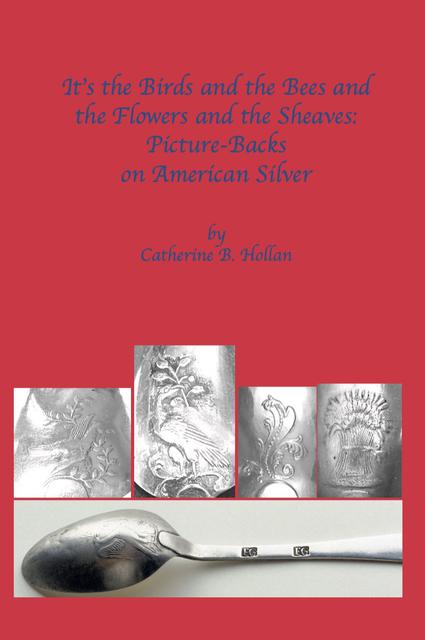- portable size 6x9"
- 142 pages, softbound
- 218 American silversmiths who marked picture-backs, 386 picture-backs, plus 32 related British picturer-backs
- re-attribution of some earlier guesses
- Examples from Boston, New York City, Philadelphia, Wilmington DE, MA, CT, RI, selected cities in PA (Bethlehem, Carlisle, Lancaster, Reading, West Chester, York), plus outliers in Salem NC and Charleston SC.
 | ||||||
It's the Birds and the Bees and
the Flowers and the Sheaves:
Picture-backs on American Silver
New!
Picture-backs first occurred when spoons were laid upside down on the table or over a teacup, so that the upturned bowl-bottom provided an enticing spot for ornamentation. American pictures are found from the late 1750s peaking in the 1790s, with a few new designs extending into the 1820s and 30s, well after spoons were flipped over bowl-up.
The largest category of American picture-backs is the bird, which include the pious pelican, uncaged bird, dove with olive branch, profile bird, turned body bird, spread wing bird, bird on scythe, bird dancing on beads, and husky eagle.
Other categories include acanthus, foliates, floral singles or groups, pine tree, basket of flowers, neoclassical urns, sheaf of wheat, beehive, griffin head, galleon, and shell variants.
Oddities:
- c1980 modern galleon from Colonial Williamsburg Foundation silversmith shop
- Moravian birds from Salem NC, Bethlehem PA, and Philadelphia, PA
- Philadelphia bird taken to Jamaica and marked for sale there in 1770s.
Although many silversmiths had no picture-backs, several had one or two. Some Philadelphia silversmiths had many. John Germon had nine and John Myers had nine (plus two more possibly his mark); Anthony Simmons and Christian Wiltberger each had 8--although a larger number of their spoons had no pictures at all.
2 for $42 Special offer:
Get the Picture-Backs and Eagle Marks books both with combined mailing for $42.
